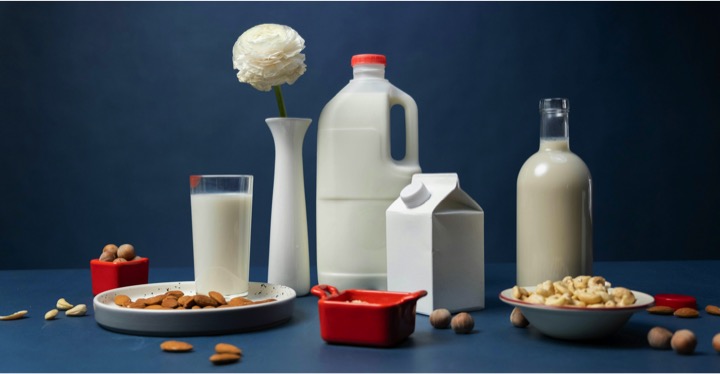A Texas dairy farmer told Farm Journal the mystery illness acts similar to the flu and impacts only older cows. While the majority of cases are being reported in Texas, the American Association of Bovine Practitioners (AABP), the nation’s largest cattle veterinary association, told Farm Journal last week they have some veterinarian members in New Mexico and Kansas who also reported symptoms.
Milk Still Safe to Drink, Meat Safe to Eat
The dairy industry sent out a join release following the news, reminding consumers milk is still safe to drink.
“Importantly, USDA confirmed that there is no threat to human health and milk and dairy products remain safe to consume. Pasteurization (high heat treatment) kills harmful microbes and pathogens in milk, including the influenza virus,” said the National Milk Producers Federation (NMPF), the International Dairy Foods Association (IDFA), the U.S. Dairy Export Council (USDEC), and Dairy Management Inc. (DMI) in a joint statement.
“Also, routine testing and well-established protocols for U.S. dairy will continue to ensure that only safe milk enters the food supply. In keeping with the federal Grade ‘A’ Pasteurized Milk Ordinance (PMO), milk from sick cows must be collected separately and is not allowed to enter the food supply chain. This means affected dairy cows are segregated, as is normal practice with any animal health concern, and their milk does not enter the food supply. Consumers in the United States and around the world can remain confident in the safety and quality of U.S. dairy,” the statement said.
The National Cattlemen’s Beef Association (NCBA) also released a statement on Monday, saying they are aware that USDA confirmed HPAI in samples collected from dairy cattle in the United States. They say it’s important to note the agency confirmed there is no threat to human health, and milk and meat remains safe to consume.
“At present, HPAI has not been detected in beef cattle. However, producers are encouraged to implement enhanced biosecurity measures on their farms and ranches to help protect their herds,” NCBA said in a statement.
The Meat Institute also reminded consumers that meat is still safe to consume.
“According to the Centers for Disease Control Prevention (CDC) and USDA food safety experts, properly prepared beef is safe to eat,” said Julie Anna Potts, CEO of the Meat Institute. “HPAI cannot be transmitted to humans by eating meat or poultry products.”
The Meat Institute also asked the White House and trade officials to make sure uninterrupted trade remains a priority.
“We call on Biden Administration officials to anticipate international trade concerns and encourage our trading partners to abide by internationally recognized scientific standards as determined by the World Organisation for Animal Health (WOAH),” added Potts.
Symptoms Being Reported
AABP reported to Farm Journal the symptoms veterinarians are experiencing.
“It appears that the disease peaks in about three to four days and lasts 10 to 14 days. Older dairy cattle appear to be more clinically affected, with a more severely affected lactation,” says Dr. Fred Gingrich, cattle veterinarian and executive director of AABP. “And although it’s not consistent with every herd, it appears that it’s mostly affecting animals that are in mid- to late lactation. It’s pretty unusual that we have something going on in older animals, and it’s not in fresh cows.”
Gingrich says AABP understood there was a dire need to find answers for dairy producers.
“We understand right now that the primary impact of this disease is economic. These herds lose about 20% of their milk production for 14 to 21 days, which is a huge economic loss,” Gingrich says. “I think we always like to look for the bright side in a situation, and we don’t appear to have mortalities associated with this disease. That’s not happening, which is really great.”
As the industry works to uncover the factors causing the disease, Gingrich says what makes pinpointing the cause so difficult is trying to decipher what the main symptoms of the illness are versus the secondary symptoms and related issues.
“It’s not a pneumonia outbreak, as far as we can see, and it’s not a mastitis outbreak. I think that some of those things that we’re seeing on farms are probably secondary to the initial agent that’s causing cows to go off feed, and every dairy farmer knows that a cow that doesn’t eat is at risk to get other syndromes and other diseases. I think that’s what’s occurring right now.” he adds.
According to the Texas Animal Health Commission (TAHC), here’s a summary of what the industry knows at this time:
The symptoms of the illness last between 10 and 14 days.
The exact cause of the illness is undiagnosed and still unknown.
Clinical signs include a sudden drop in milk production.
Some severely impacted cows are producing thicker, more concentrated, colostrum-like milk.
The problem causes a drop in feed consumption with a simultaneous drop in rumen function, accompanied by loose feces and some fever.
Impacted herds have reported older cows in mid-lactation may be more likely to be severely impacted than younger cows, fresh cows or heifers.
Dry cows and heifers do not appear to be affected.
Some herds have reported pneumonia and mastitis.
Texas officials say they are working with USDA to further monitor and evaluate reported cases.
“We’re trying to rule out infectious diseases in anything that might be related to feed or water or any kind of supplementation that these animals are receiving,” Dr. Lewis R. “Bud” Dinges, TAHC executive director and Texas state veterinarian, told Farm Journal last week.
Signs to Look For
Gingrich says both dairy producers and veterinarians should be on high alert and stay vigilant with biosecurity measures.
If you’re a dairy producer, Gingrich says these are some signs to look for:
Rapid onset of cows that aren’t eating
Either a drop in rumen activity or more feed in the bunk at the end of the day
A substantial loss in milk production
“These things are key,” says Gingrich. “Don’t just think you might have a bad batch of feed or that you have a respiratory outbreak and just need to vaccinate. If you see any of these issues, immediately call your veterinarian. I think that is important. I think the other thing that is important is, as with any disease, make sure you’re documenting it with good recordkeeping on who’s affected, when they are affected, et cetera. Good recordkeeping on sick cows applies to any disease. So I would encourage you to do that, as well.”
Texas Department of Agriculture says the Texas dairy industry is essential to the state, contributing roughly $50 billion in economic activity across the state. Texas also ranks fourth in milk production nationwide and continues to be a key player in the dairy industry.
























